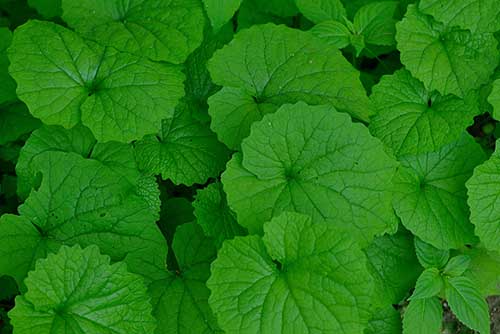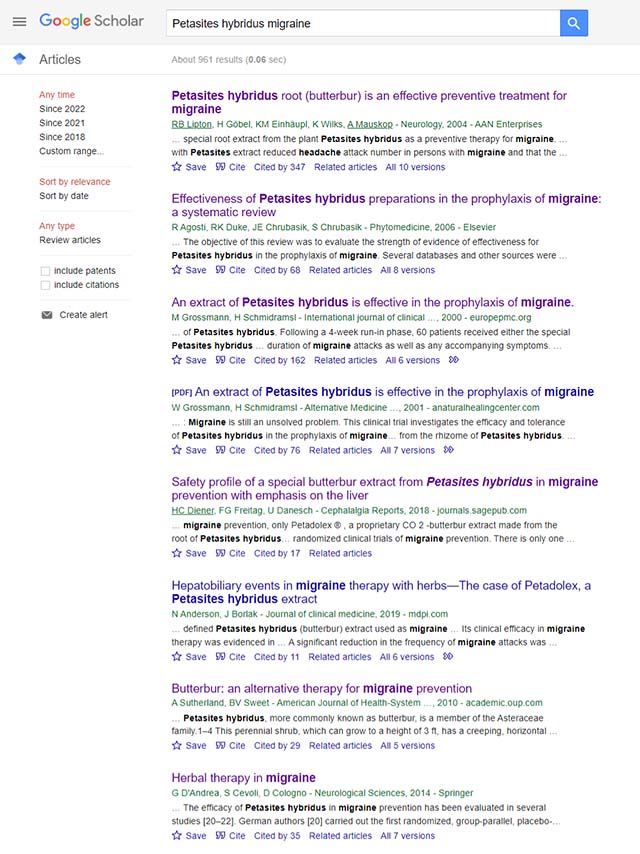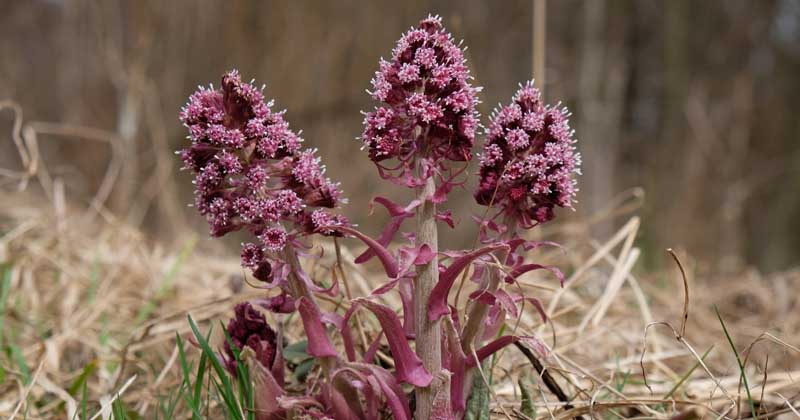Butterbur (Petasites hybridus) is a medicinal plant known for health benefits like reducing allergies and relaxing muscles. It is also one of the most promising natural treatments for migraines. Despite the evidence that butterbur is effective, there is still a lot of confusion about how to take it for migraines.
Below is what you need to know about how butterbur treats migraines, dosage and safety.
What Causes Migraines?
Researchers still don’t know the exact cause of migraines. However, we know a lot more than in the past. The migraine process involves a cascade of chemical compounds in the body, including cytokines, ATP, nitric oxide and hormones.
These chemicals trigger contractions in blood vessels, leading to severe pain. As blood vessels swell, the body releases inflammatory chemicals which in turn worsen swelling and pain.
How Butterbur Helps Migraines
To treat migraines, you have to stop the migraine chemical reactions in their tracts. Butterbur contains numerous compounds – particularly sesquiterpenes like petasin, pyrrolizidine alkaloids and flavonoids – which have been shown to regulate neural activity and reduce inflammation.
There is also evidence that butterbur regulates prostaglandins in central nervous system cells. Prostaglandins trigger inflammation in the nervous system and are likely involved in migraines.

Scientific Research and Evidence
In recent years, there have been numerous clinical studies on butterbur for migraines. The results are very promising.
While butterbur doesn’t completely prevent migraines, multiple studies found it significantly reduced the frequency of migraines by nearly 50%. It was even more effective in reducing migraines in children.

Butterbur Dosage
In studies, a typical dosage of butterbur for migraines was 50mg to 150mg per day, divided into two doses. The studies found that the higher dosage of 150mg per day was more effective than lower doses.
Note that the studies had patients taking butterbur for migraine for 3-4 months. While some benefits were found after just 1 month of taking butterbur, you’ll likely need to take it longer to get results.
Butterbur Safety
Butterbur contains pyrrolizidine alkaloids (PAs), which are natural toxins produced by plants to protect them from animals which would eat them. High amounts of pyrrolizidine alkaloids can cause liver damage and may even cause cancer.
Because of this, there is some worry that butterbur could cause liver side effects. However, multiple studies have found that butterbur is safe to take and does not cause serious adverse side effects (though mild gastrointestinal effects, such as burping, are common). It’s worth noting that 3% of the world’s flowering plants contain PAs. Even honey has PAs.
In one study on rats, toxicity from butterbur only occurred at more than 2500mg per kg of body weight (which translates to 147,500mg for a 130lb person). That’s more than 900x the recommended dosage of butterbur!
The bottom line? Butterbur is most likely safe. However, to play it safe, you can choose a butterbur supplement without pyrrolizidine alkaloids.
Butterbur Supplements without Pyrrolizidine Alkaloids
There is a method of extracting butterbur with “supercritical CO2”. This method reduces the amount of pyrrolizidine alkaloids to levels so low they cannot be detected. However, butterbur supplements made with this method are usually much more expensive so many people choose cheaper ones made with dried leaves or roots.
The following supplements are made with an extraction process so they do not contain pyrrolizidine alkaloids. They are also standardized to 15% petasins.
- Nusa Pure Butterbur Extract 100mg: 200 capsules per bottle; vegan
- Pentadolex Pro-Active 50mg: 60 soft gel capsules per bottle; contains gelatin
- Linpharma Pentadolex 75mg: 60 soft gels; contains gelatin
Also see these other picks for best butterbur supplements without pyrrolizidine alkaloids.

